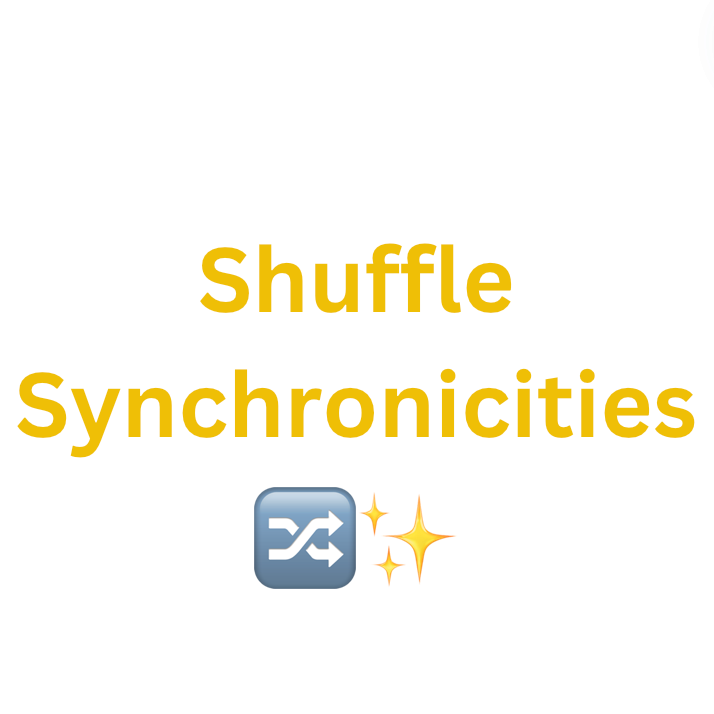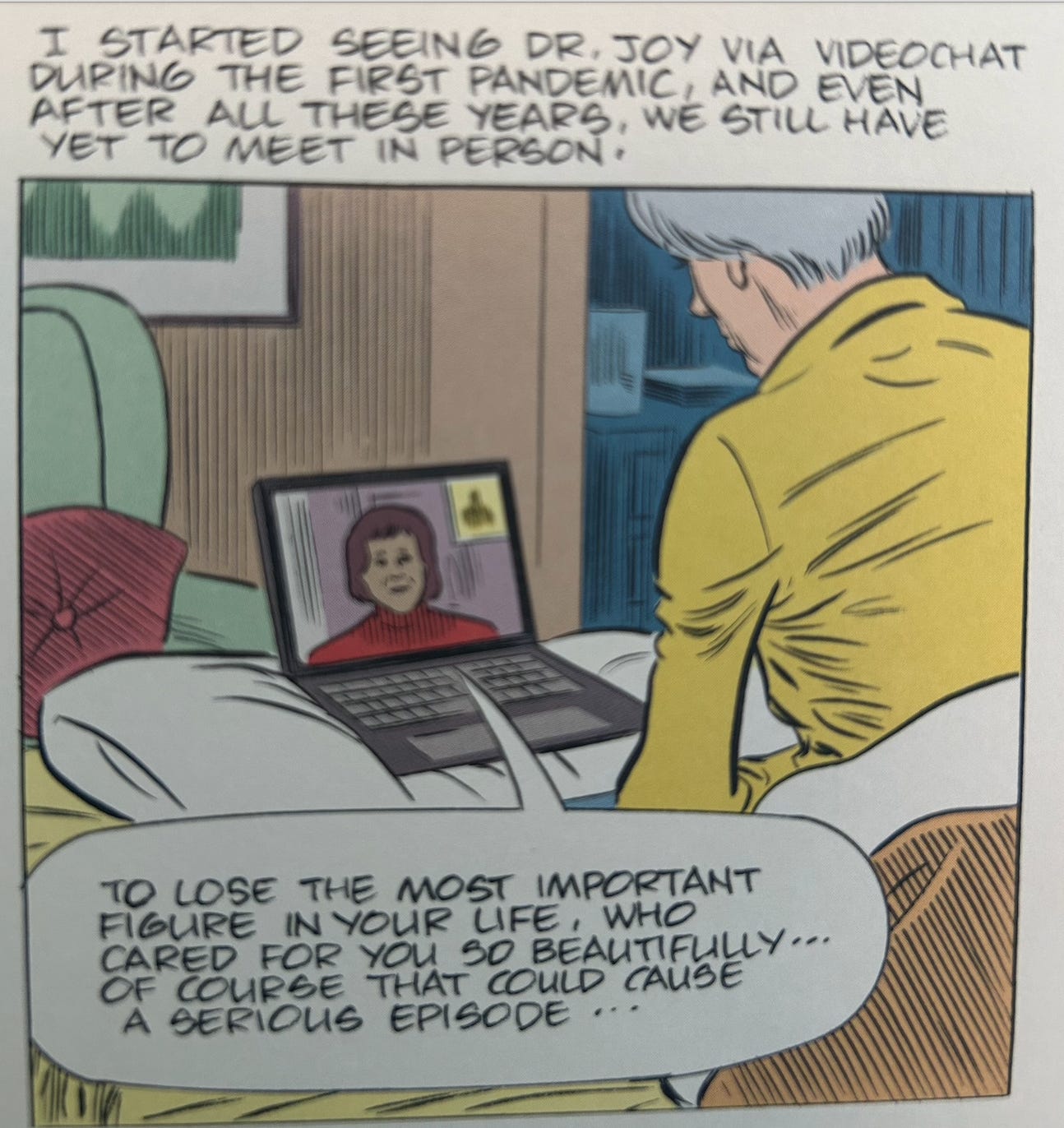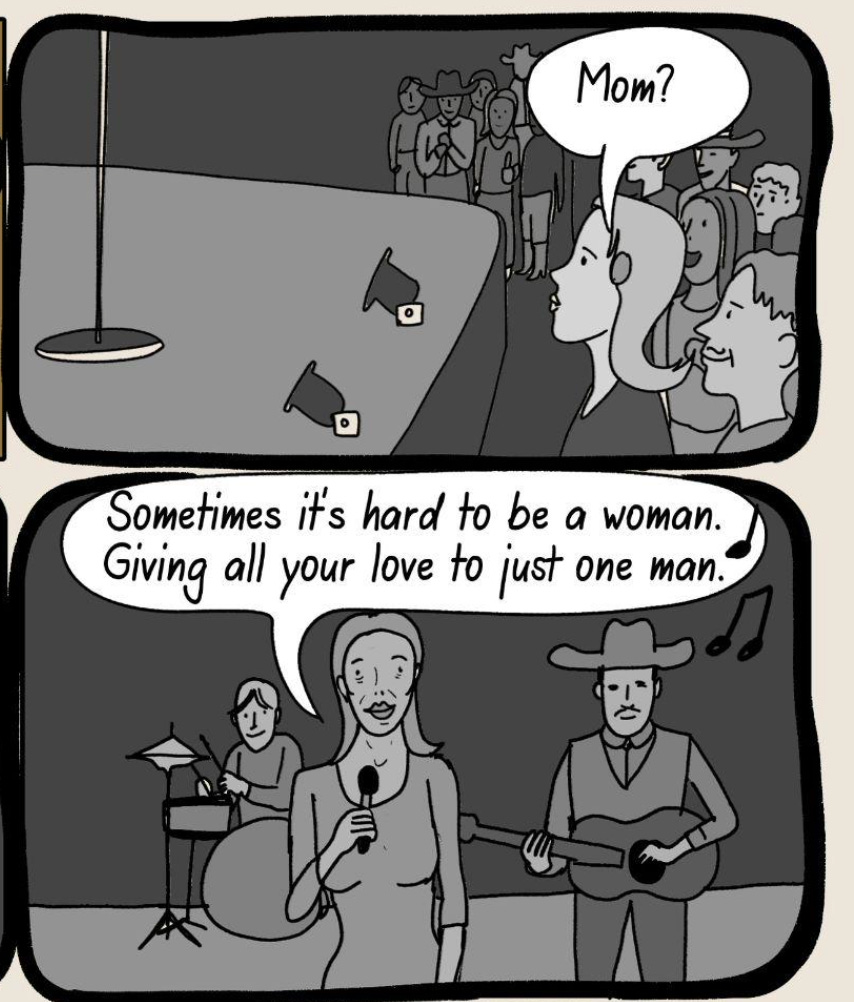A Blurb Request Turns Into An Interview
I recently reached out to a few authors of notable non-fiction books about guns in America for blurbs supporting my graphic novel SHOULD WE BUY A GUN?
One of these authors, Cameron McWhirter, co-writer of American Gun, which details the obscure invention and now ubiquity of the AR-15, read the manuscript this past weekend.
Instead of a blurb, he offered to interview me for an article he’s working on for The Wall Street Journal.
It was my first time discussing the semiautobiographical elements of the book and my thoughts on the gun debate with a national reporter.
I was both excited and anxious but I prepared as best as I could and gave it my all.
I’ll let you know if any of it gets used!
Meeting DC 2023 A.D.
Back in October of 2023, I had the opportunity to meet Daniel Clowes at a Skylight Books signing for this book Monica.
I’ve been to many readings there and a few signings.
But I had never seen such a long line of guests waiting for a writer before.
After waiting over two hours, I finally had the chance to meet Daniel.
He charmingly complimented my DARE to keep kids off drugs t-shirt.
And then I asked him if his use of a supernatural music radio in Monica was based on any personal experience with grief.
He nodded gravely, and with just a few words, ‘In a way,’ he conveyed the depth of his personal experience, leaving me with a sense of quiet connection.
Shuffle Synchronicities
This reminds me to mention that my other Substack, Shuffle Synchronicities, which explores how something greater communicates through the music we love, is back, now with weekly teachings.
If you’re interested in how meaningful music coincidences can help us co-curate our lives, please subscribe!
Daniel Clowes
Daniel Clowes is a beloved and renowned American cartoonist, graphic novelist, illustrator, and screenwriter.
He is best known for his influential comic book series Eightball, where much of his work first appeared before being collected into graphic novels, including Like a Velvet Glove Cast in Iron (1993), Ghost World (1997), and David Boring (2000).
Ghost World, celebrated for its dark humor and exploration of complex female friendships, was among the earliest American "literary" comics to be marketed and sold through conventional bookstores as a graphic novel. It became a Gen X cult classic and was adapted into an Oscar-nominated film in 2001, co-written by Clowes with director Terry Zwigoff and starring Scarlett Johansson and Thora Birch.
More recently, Clowes has produced non-serialized graphic novels such as Wilson (2010) and Patience (2016) that delve into themes of loneliness, masculinity, and aging.
Clowes' art style is well-recognized for its meticulous and idiosyncratic detail.
And he has received numerous accolades, including multiple Eisner and Harvey Awards, and a PEN Award for Outstanding Work in Graphic Literature.
Monica, his latest, continues this tradition, earning spots on "Best of" lists for 2023 from The New York Times, Washington Post, and The Guardian, among others.
MONICA

Monica is a series of interconnected narratives that collectively tell the life story — actually, stories — of its title character.
Clowes calls upon a lifetime of inspiration to create the most complex and personal graphic novel of his distinguished career.
Rich with visual detail.
An impeccable ear for language and dialogue.
And thrilling twists.
Monica is a multilayered masterpiece in comics form that alludes to many of the genres that have defined the medium.
War
Romance
Horror
Crime
the Supernatural
But in a mysterious, uncategorizable, and quintessentially Clowesian way that rewards multiple readings.
Five years in the making, Monica marks the apex of creativity from one of the defining voices of the graphic novel boom over the past quarter-century.
Dense, Plot-Driven Narration + Well-Matched Fun Dialogue & Moody Visuals
Clowes, particularly in Monica, has an enormous talent for employing very dense narration but interspersing it with moments of very fun dialogue.
There are also pages of plot-driven narration without dialogue that utilize moody visuals to entertain.
This density of narrative is why, Monica, which is only 106 pages long, still feels like a complete graphic novel.
Semiautobiographical Self-Reveal
By now, I wouldn’t be the first to reveal that there is somewhat of a semiautobiographical self-reveal by Clowes in Monica.
But I won’t say more than that ;)
Monastic Devotion To Art Parody
As someone who sometimes overly commits himself to a monastic devotion to art, I really enjoyed Clowes perhaps also somewhat self-owning critique of such a practice.
Supernatural Music and Life
As mentioned in the story above about meeting Daniel at his book signing, one of the most resonant aspects of Monica is Clowes’ use of a supernatural musical element.
After Monica suffers a bout of grief at a young adult age, she begins to have an experience where her radio talks to her as if it’s the spirit of her family member, which becomes a formative event that shapes her and the resulting stories.
Whether Monica has a valid individuation quest versus whether she should accept a despiritualized life, and the costs and benefits of both approaches, is perhaps the defining theme of this work.
Music in SHOULD WE BUY A GUN?
Music is also an important element in SHOULD WE BUY A GUN?
Characters put on songs to express something they are unable to say aloud yet.
Songs come up while receiving messages through dream states.
And there is even a Shuffle Synchronicity or two ;)
Don’t just take my word for it, Masterpiece!
for The New York Times Book Review says that Clowes’ Monica is not just on par with his greatest works but perhaps his masterpiece.“Chilly and remote his sympathies might be, they are nevertheless deep and affecting. It is precisely Clowes's lower-frequency sensitivities toward the suffering of his characters that power what many consider his greatest works — Ghost World, for one — and elevate his latest graphic novel, Monica, to the status of a masterpiece."
— Junot Diaz - New York Times Book Review


























